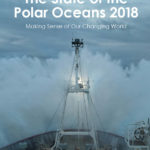Plasticity in the foraging behavior of male Southern Rockhopper Penguins (Eudyptes chrysocome) during incubation in the Falkland/Malvinas Islands
1 September, 2018 by Norman Ratcliffe
Environmental changes often affect the persistence of species or populations at different spatial and temporal scales. Thus, species must either adapt to these changes or experience negative impacts at the…